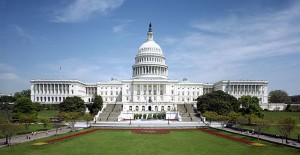 [1]We’ve all heard lots about it, but what exactly is in that highly-publicized Dodd-Frank Act?
[1]We’ve all heard lots about it, but what exactly is in that highly-publicized Dodd-Frank Act?
Lots of things. For starters, the name of the Act is a lot longer: It’s the “Dodd-Frank Wall Street Reform and Consumer Protection Act.” Its aim is to promote financial stability through a host of new regulations and regulatory agencies, bring greater accountability to Wall Street, end bailouts, amend the Federal Reserve Act, and do other things that affect the symbiotic relationship between Wall Street and Washington.
That was the much-publicized part of the Act.
But now that the details are getting out there, we know that, like all things that come out ofWashington, the impact will be felt in local communities, especially among community banks.
Among other things, Title XIV of the Act amends the federal Truth in Lending Act, which applies to all banks. In my opinion, the biggest change for local banks is found in Section 129 of the Act, which requires a residential mortgage lender to make a reasonable, good faith determination, based on verified and documented information, that a borrower can repay his or her loan and all applicable taxes and insurance, as well as any other loans secured by the same house (unless the lender doesn’t know about the other loans, which would be rare, due to the customary use of mortgage title insurance).
Any responsible lender, of course, always first determines that a consumer can repay a loan, but previously, the bank’s penalty for making a mistake in such a determination was limited to the obvious: a bad loan on the books and related losses (plus, if it had sold the mortgage loan to Freddie Mac or Fannie Mae, the agency might try to make the bank reimburse it for its losses). Now, the bank could be exposed to civil damages and attorney fees if it makes such a mistake.
There are, however, various exceptions to this new obligation. The biggest exception: qualified mortgages. If a bank makes a “qualified mortgage” loan, then it doesn’t have to meet the Section 129 requirement to make a good faith determination that a borrower can repay.
So what is a “qualified mortgage”?
It’s a term defined by the statute. It basically means a conventional mortgage that meets a slew of requirements. Among other things, in order to be a “qualified mortgage,” the loan:
*cannot allow deferral of principal payments,
*cannot result in negative amortization,
*cannot have a balloon payment,
*must be based on verified and documented income and asset information,
*must be underwritten based on fully-amortizing payments,
*cannot have points and fees that exceed 3% of the loan amount,
*cannot have a term that exceeds 30 years,
*and, if subject to an adjustable interest rate, must be underwritten at the maximum rate permissible during the first five years of the loan.
That’s a lot to follow, but I wouldn’t be surprised if lenders start fashioning all their mortgage loans in a way that would make them “qualified mortgages.” To the extent they vary a mortgage loan in a way that takes it outside of the “qualified mortgage safe harbor,” they’re taking a big risk.
The result is that community banks are being pressured into a “one-size-fits-all” approach. That’s frustrating. Most community banks made responsible loans during the aughts (and to the extent they didn’t, it was often because Washington pressured them into reducing their lending standards — which is an entirely different story and beyond the scope of this piece). Yet they’re all being punished and pushed into the “qualified mortgage” approach. If they don’t use qualified mortgages, they’re opening themselves up to claims (including invalid claims brought by unscrupulous lawyers).
And on top of all that, Congress implemented a further unique twist: If a lender make a non-qualified mortgage and fails to properly make and document the determination that a borrower can repay, the borrower may assert a claim for violation the Act at any time the lender commences foreclosure. Many mortgages continue for 30 years, so there’s a chance a claim for violating Section 129 could live for thirty years. This effectively creates a 30-year statute of limitation.
That, to the best of my knowledge, is unprecedented, and it creates a minefield of future liability for your community bank.
Strange times create strange laws.
And the Beltway rarely limits its aim to its claimed target.